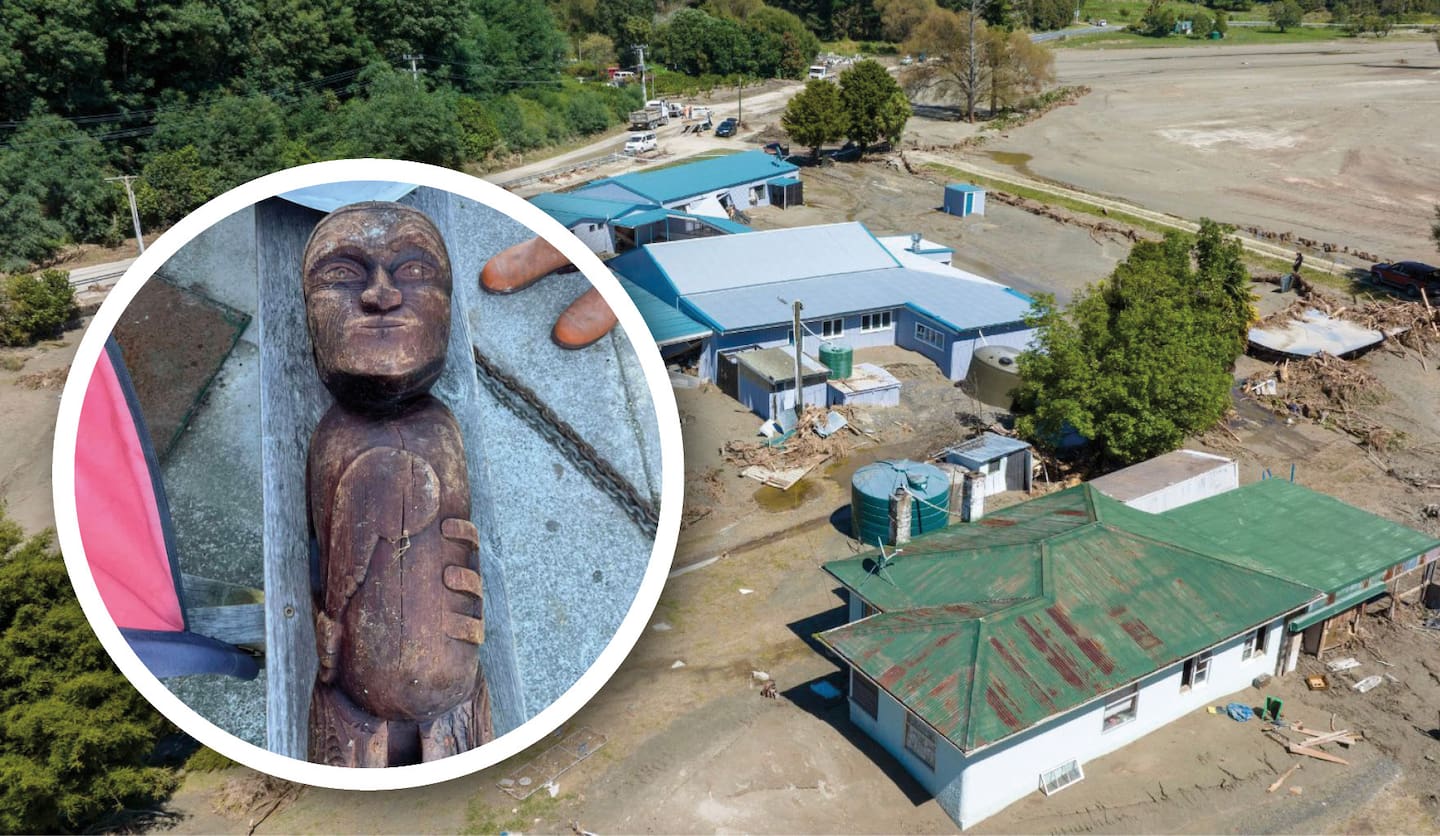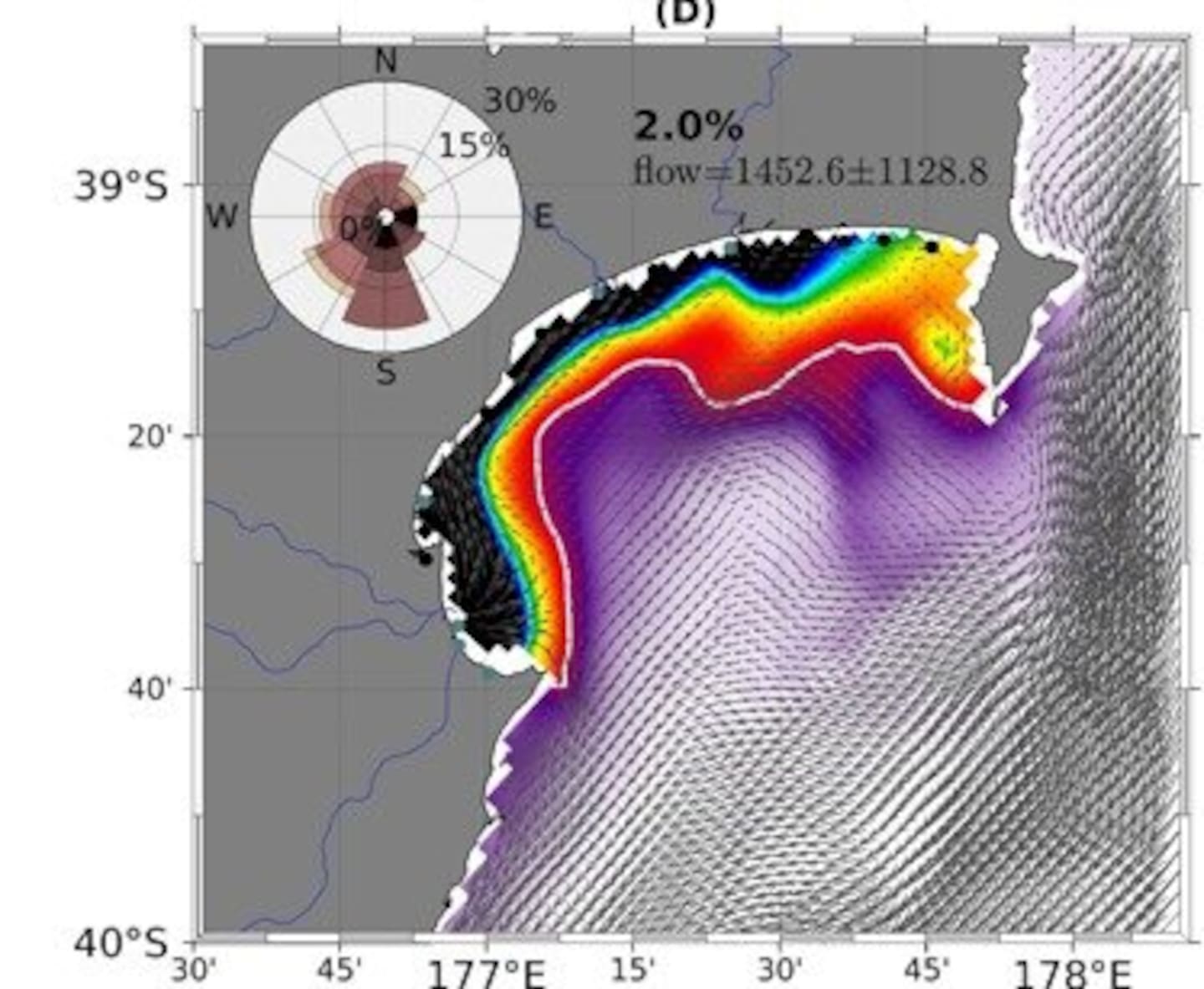- Dr Craig Stevens from Niwa says the Tāngoio Marae pou was likely moved by natural forces.
- Stevens explains the pou’s journey was supported by local ocean circulation patterns after Cyclone Gabrielle.
- Ngāti Kahungunu chairman Bayden Barber calls the pou’s return ‘an auspicious event’ for the iwi.
A Tangoio Marae pou found on a Mahia beach 650 days after it was swept away in Cyclone Gabrielle would likely have sat somewhere nearby until it was moved by natural forces to where it was found, according to a Niwa oceanographer.
The pou, named Te Iwiwhati after the ancestor it was carved to remember in the 1990s, has been returned to the Hawke’s Bay marae, where it is being looked after by tohunga whakairo Bevan Taylor.
Dr Craig Stevens, a principal scientist and marine physicist at Niwa, says the path the pou took when it was washed into the sea by Cyclone Gabrielle is a typical route taken by debris floating in Hawke’s Bay, especially from Tangoio Beach.
“There is a clear northward average flow along the coast in the region for significant periods of time,” Stevens said.

A pou swept away from Tangoio Marae during Cyclone Gabrielle has been found after 650 days.
Stevens said, as with most parts of Aotearoa’s moana, there was little data to build a reliable picture of how the ocean circulated around the region.
“The general picture is a southward flow well offshore, linked in with large ocean eddies, but in the Bay itself, there are maybe one or two large circulation cells depending on wind and offshore currents strength.“
Since Gabrielle, Niwa has been looking at the fate of sediment and floating debris, coming to a consensus there are a pair of circulation cells in Hawke’s Bay – one of which “would certainly support the journey the pou took”.
What Stevens finds intriguing is the typical timescale of debris travelling in the Bay, compared to the pou’s journey.
“Anything in the water would get up there quite quickly if it was going direct. If it got washed far out to sea it would be a very low probability of coming back into the system as it would enter those big offshore eddies.
“It would seem most likely it has been sitting somewhere close-by undiscovered and then finally been moved by wind, waves, and currents to eventually be found.”
But Stevens said “never say never” to one-off drifting journeys in the oceans.
“There are countless stories of items taking circuitous routes from A to B in the ocean that can sometimes be very different to our understanding of general circulation patterns.
“It just takes the right combination of wind, waves, tides, and currents and a single item can end up somewhere very different to where average conditions would take it.”

A synthesis of computer simulation results showing freshwater concentration (red through black) for southerly winds - a situation that would help push drifting material towards Mahia.
When asked if Hawke’s Bay residents should be heading to Mahia to retrieve possessions lost in Gabrielle, Niwa ocean modeller Dr Charine Collins said data indicates a tight circulation cell in the region of the Mahia Peninsula.
“This would potentially trap material before it got pushed out into the wider coastal current system and taken far away,” Collins said.
Ngāti Kahungunu chairman Bayden Barber told Whakaata Māori the pou’s return was “an auspicious event and a welcome sight for the iwi”.
“It’s a sign of life. The marae is still alive, the carving is still alive and the people of Tangoio are still alive.”
From a Māori perspective, the finding of the pou could be an event that re-connects Rongomaiwahine (Mahia) and Kahungunu (Hawke’s Bay) and their thousands of descendants, Barber said.
Rongomaiwahine was the ancestor of the people of the Mahia Peninsula and eventually married Kahungunu, the ancestor of Ngāti Kahungunu in a somewhat auspicious love story - a legend that has been told through generations in the region.
“There have been many times this kind of event has been seen,” Barber said. “It enables ancestral connections to be formed and also connects events. It is an amazing spectacle that this carving lives on.”
Jack Riddell is a multimedia journalist with Hawke’s Bay Today and spent the last 15 years working in radio and media in Auckland, London, Berlin, and Napier. He reports on all stories relevant to residents of the region, along with pieces on art, music, and culture.
Take your Radio, Podcasts and Music with you









